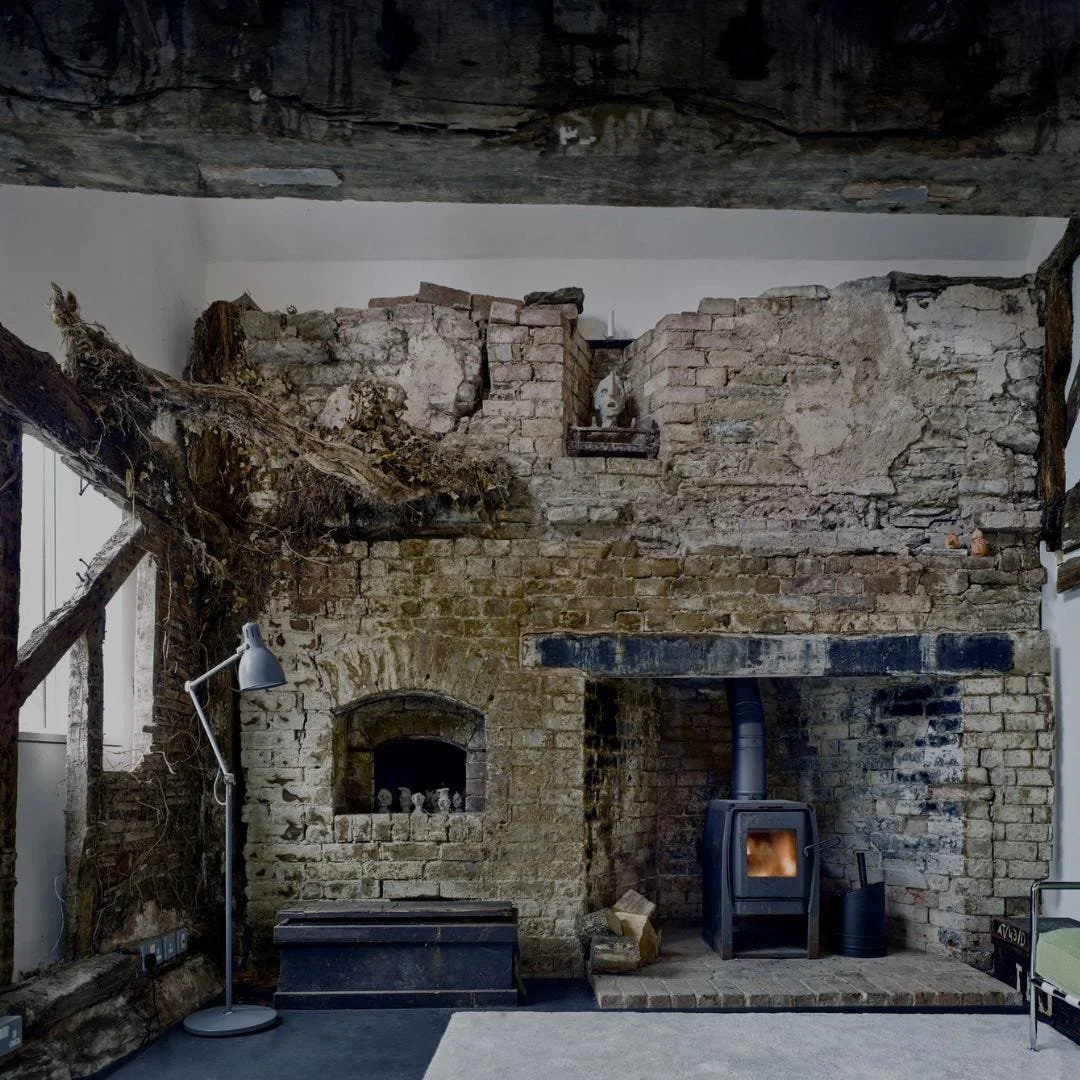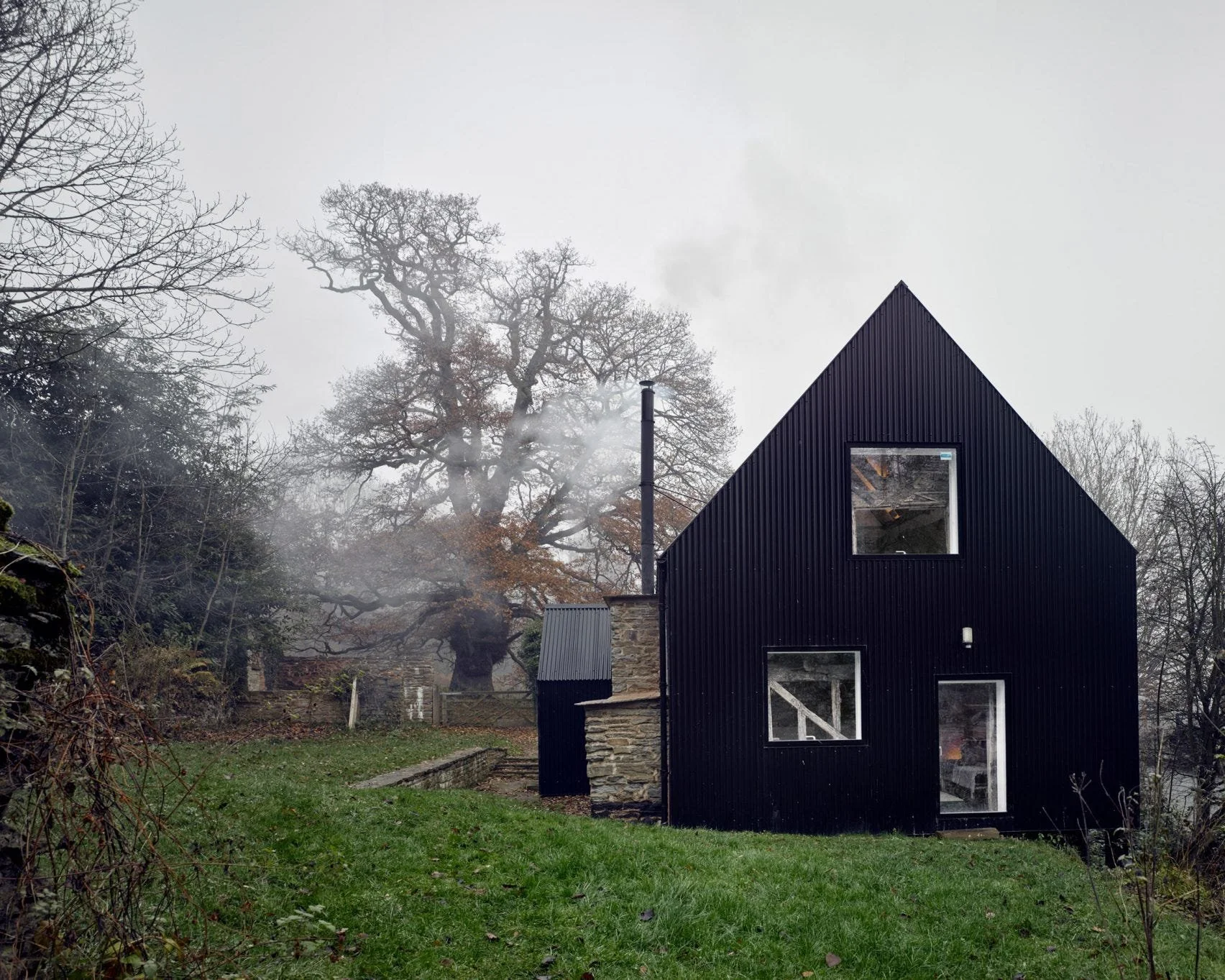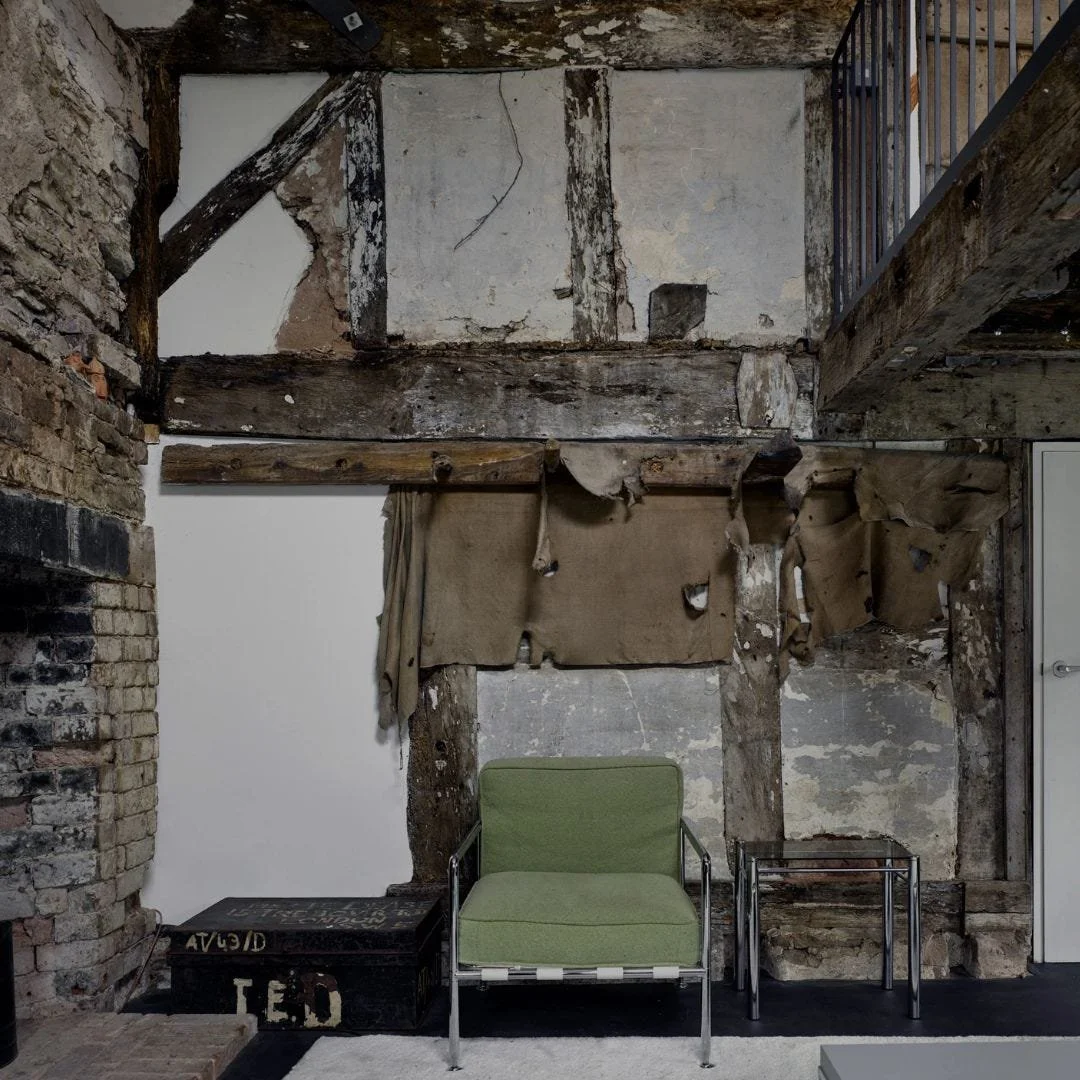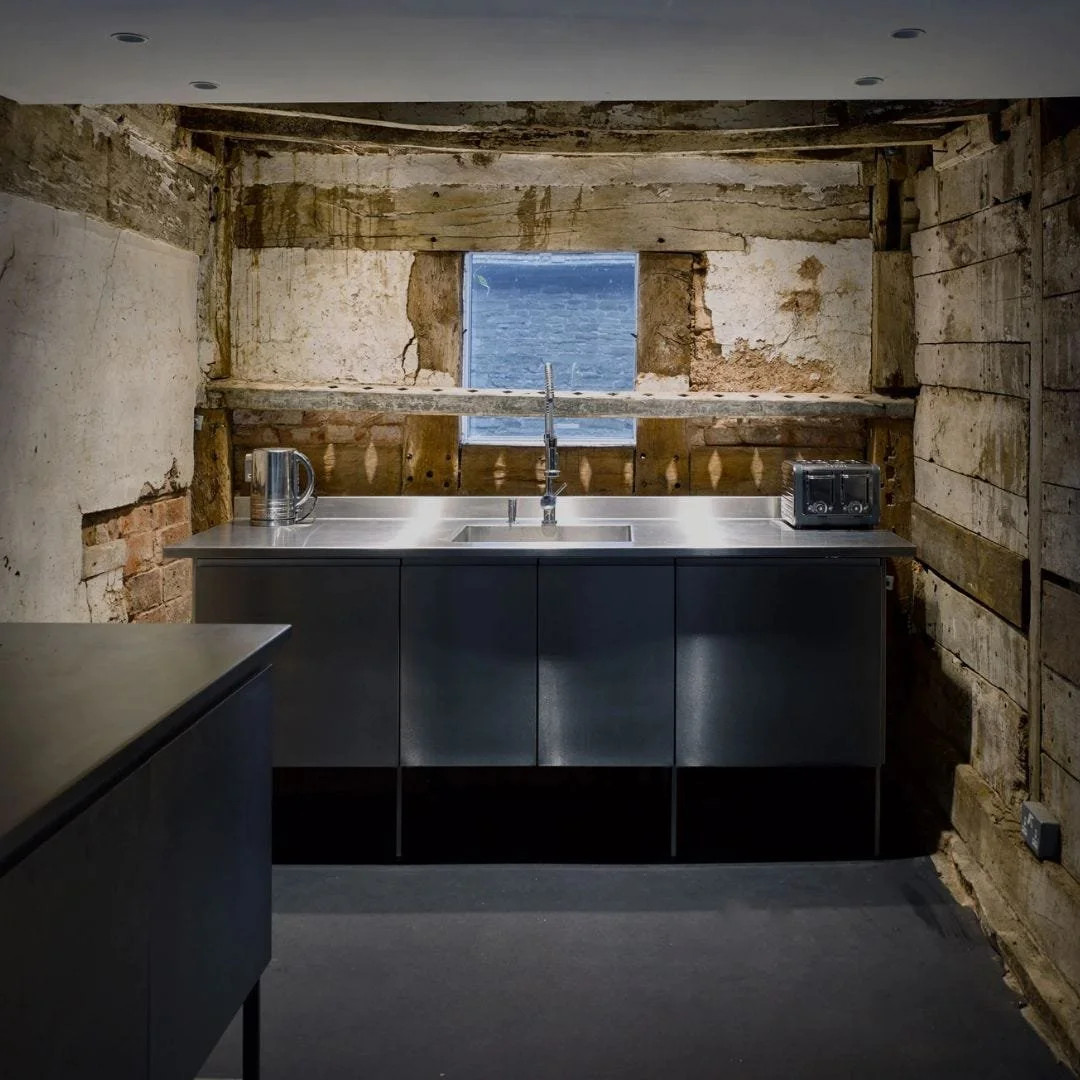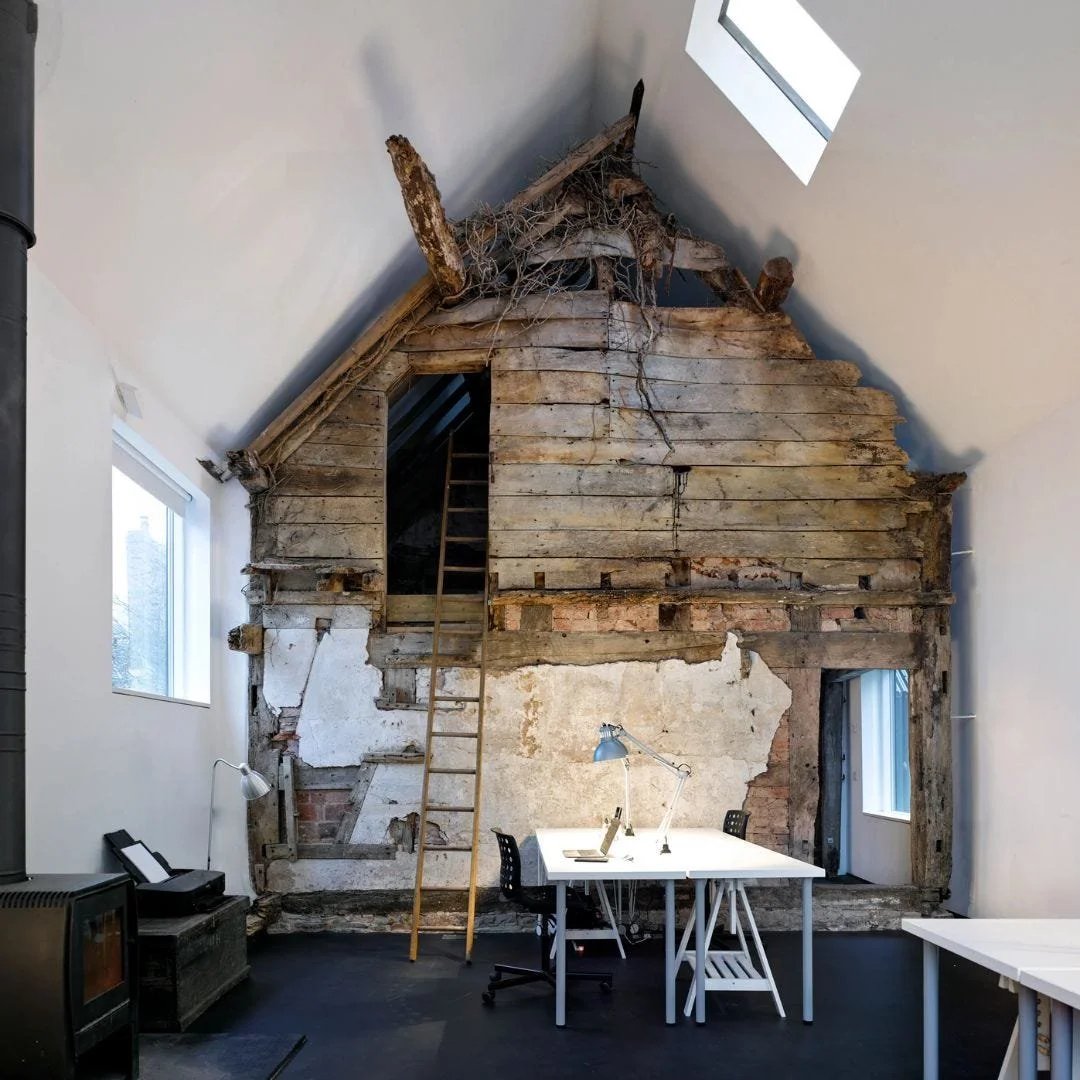Preservation or Performance? A Critical Reflection on Croft Lodge Studio
The Croft Lodge Studio by David Connor Design and Kate Darby Architects exemplifies extreme conservation, where a decaying 18th-century cottage is entirely preserved within a protective black metal shell. Rather than restoring or repairing, the project embraces material authenticity, leaving rotten timbers, bird nests, and dust intact (Mairs, 2017). This aligns with the Society for the Protection of Ancient Buildings’ (SPAB) Manifesto, which prioritises minimal intervention (SPAB, 1877). Though, such an approach raises concerns about long-term liveability and material stability. By enclosing the ruin in an airtight shell, the design isolates the building from natural cycles of wear and renewal, creating what might be termed the "pickle jar effect", preservation as stasis rather than evolution.
While conceptually compelling, this method prioritises an aesthetic statement over human experience. The exposed timbers and skeletal remains of the structure provide an evocative historical presence, yet practical concerns arise: how will moisture, air quality, and thermal comfort be managed over time? The kitchen successfully balances old and new with an aluminum counter and cabinetry, yet elsewhere, the rigid adherence to preservation leaves questions unanswered. Though solar panels and triple-glazed windows enhance sustainability (Mairs, 2017), the building may require constant conservation oversight, making its long-term viability uncertain.
Conclusively, Croft Lodge embodies the paradox of extreme preservation: a space that celebrates history yet isolates it, prioritising material integrity over adaptability. While it offers a striking model of conservation, true sustainability demands a more human-centered approach, where buildings can evolve with their inhabitants rather than remain frozen in time. The challenge for architects is not just to preserve, but to create spaces that acknowledge both the past and the future.
References
Mairs, J. (2017). Kate Darby and David Connor preserve rotting structure in conversion of 18th-century cottage. Dezeen.
Society for the Protection of Ancient Buildings (SPAB). (1877). The SPAB Manifesto.
